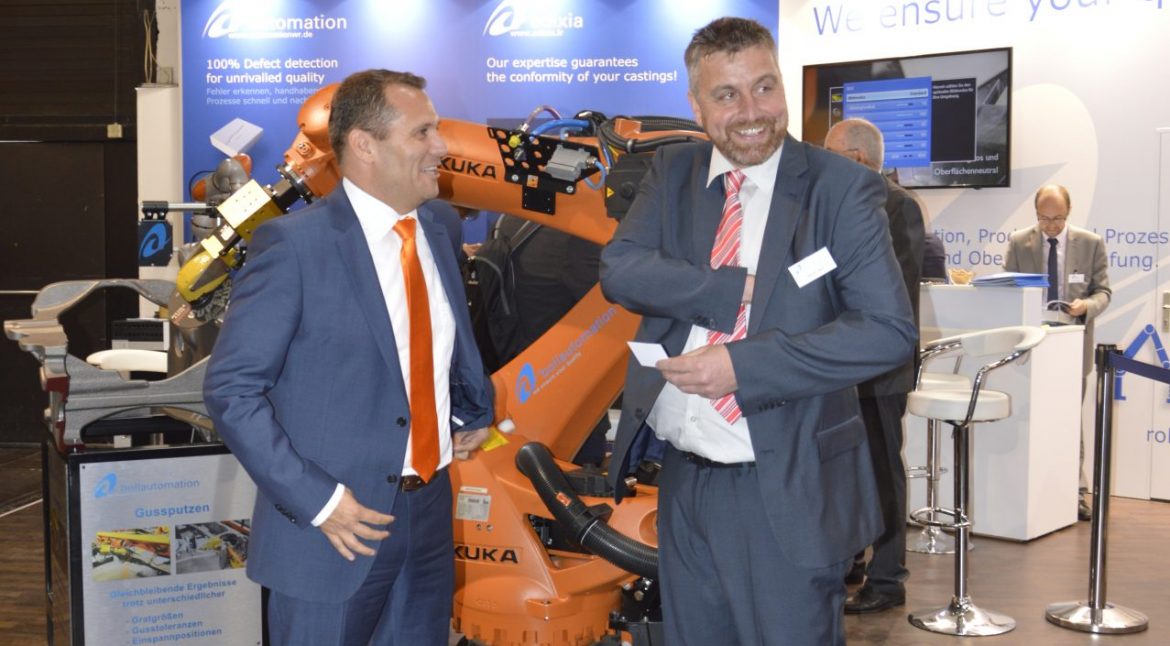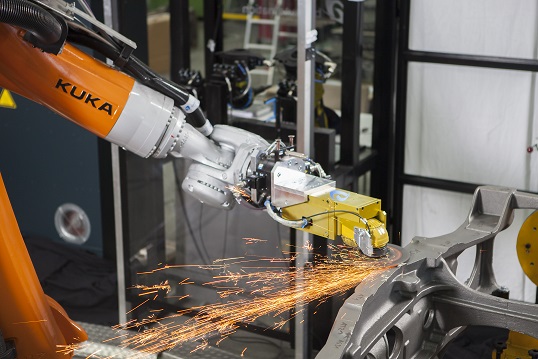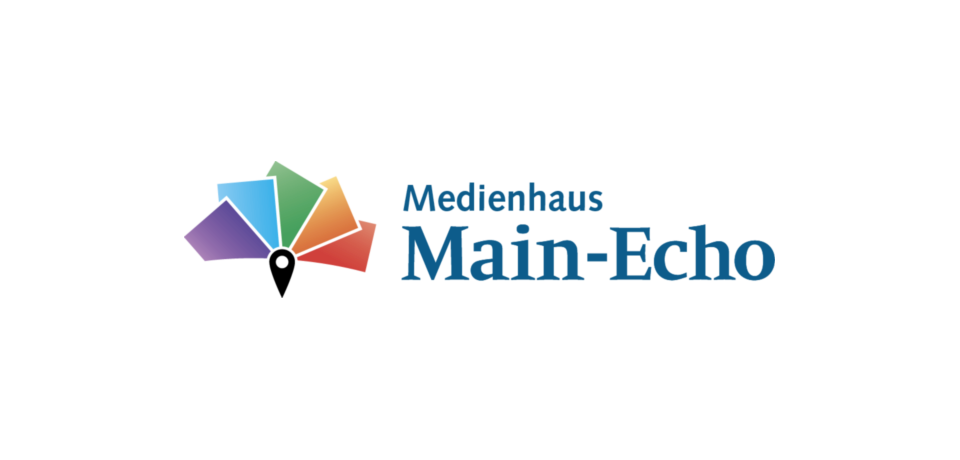Automated fettling reduces the workload of foundry employees
Since foundry workers are often exposed to high physical stress during post-treatment, which can also increase the risk of injury and thus illness-related absenteeism, the company Boll Automation GmbH, Kleinwallstadt, has developed a novel, innovative robot-assisted cast cleaning system that can solve the aforementioned problem.
Currently, castings are still processed manually in most cases, which can seriously affect the health of the employees involved. There is an acute risk of injury due to the heavy tools, such as cutting and grinding wheels, that are used here, but also due to chips flying around. The employers’ liability insurance associations are therefore calling for such physically demanding, monotonous and health-damaging activities to be made more ergonomic through automation.
System for robot-based finishing of castings with upstream contour detection
The engineers at Boll Automation GmbH have developed an innovative system for the robot-based finishing of castings with upstream contour detection for this difficult task. An optimal and process-reliable solution was created through an intelligent combination of robotics, image processing, and grinding and cutting tools. The castings can be cleaned automatically and reliably despite casting tolerances and varying burr thicknesses thanks to an intelligent deburring strategy.
The deburring process takes place in two sub-steps: firstly, the measurement and secondly, the fettling of the castings. In the first step, an optical sensor system is used to determine the exact position and to detect the contour. In the subsequent step, the castings are automatically processed using robot technology. In this process, a 6-axis KUKA jointed-arm robot operates several machining units for fettling and grinding off the cast burrs.
For this purpose, Boll Automation uses a combination of 2-D and 3-D vision technology as well as various tools for milling, cutting and grinding. Detecting and measuring the entire casting takes less than a minute. This quickly determines the exact paths to be traversed by the robot. An optimum deburring strategy is then selected depending on the burr formation and position.
High safety aspects allow an optimal division of labor between humans and robots
A tool change of the wear material can easily be carried out by the operator while the robot is machining the casting. Particular emphasis is placed on the safety aspect here by ensuring that the wheel change takes place in a safety zone. It goes without saying that the current CE conformity directives are observed. To enable the operator to act in good time and replace worn discs, the current wear condition of the disc is measured within just a few seconds after each machining process, and from this it is calculated exactly how many more work processes are possible before a disc change becomes necessary.
Since the environments in the foundry environment are usually rough, dusty and dirty, it is particularly important that no dirt interferes with the contacts between the robot and the tool, so that the machining process can run permanently with absolute reliability. A maintenance-free, durable tooling system provides optimum protection for contacts and tools in the harsh environment in a simple manner. The design of the control cabinets is also adapted to the high temperature, dirt and vibration loads of the foundry environment.
Visualization is via a user-friendly touch panel and provides the operator with a quick overview of the entire robot system. Downtimes can be avoided here due to low susceptibility to errors. In addition, employees are quickly and effectively trained through the very simple user interface and are thus able to maintain a safe handling of the robot operation after only a short time.
The double-turn positioner achieves an optimum division of labor between man and robot. While the robot carries out heavy work, the operator can check the post-processing result outside the danger zone and carry out minor finishing work on the casting, then remove the finished part and feed the next one already into the process. This results in an ideal distribution of the work to be done between the human operator and the robot, depending on which task can be performed most optimally by which side. This clever distribution can be precisely adapted to the cycle times of the operation.
Another additional benefit is that accessibility is greatly increased for both the operator and the robot by rotating the casting. This not only saves a lot of time, but also extremely increases the ergonomics of the workplace. The manual reinspection process as well as the further residual work to be performed on the workpiece are thus reduced to a minimum and simplified to the greatest possible extent.
Same results despite different burr thicknesses
One of the most important questions in finding a solution for robot-based finishing of castings is: How can consistent finishing results be achieved, even in contrast to manual machining, despite different burr thicknesses of the castings? The specialists at Boll Automation use intelligent sensor technology to solve this problem, so that the robot can always follow its working paths in a cycle-time-optimized manner despite varying burr thicknesses. In the process, the robot learns to see and feel just as a human would in the same case. The result is a constant post-processing result after a short learning phase. In contrast, the results of rework that was previously carried out manually often vary enormously, depending on the individual employees, but also on their respective daily form. This problem is solved reliably by the robot system.
Where previously a casting was processed in over 60 minutes, the same work can now be done in almost half the time, with higher quality and absolutely repeatable results. This not only saves a lot of time and money, but also significantly optimizes the production process. This, in turn, ensures the delivery of products to customers with consistently high quality.
The most important benefit of the innovative robotic system, however, is the relief of employees from physically heavy work. Thus, with this automatic fettling solution, a big step can be made towards ergonomic workplaces in modern foundry operations.






